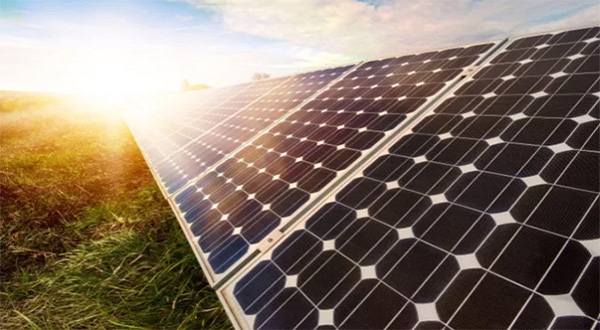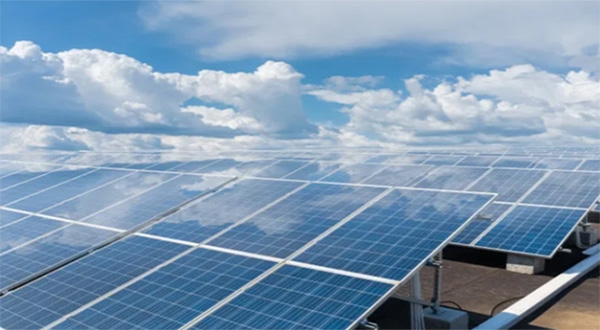Solar energy is one of the most promising sources of renewable energy available today. Its ability to generate electricity without harmful emissions has made it increasingly popular around the world. However, one of the most common concerns people have is whether seasonal changes, particularly variations in weather and sunlight, affect the efficiency of solar panels. Solar energy systems rely on sunlight, so it stands to reason that fluctuations in sunlight due to seasonal changes would have an impact. This article will delve into the science behind how solar panels function, examine the impact of seasonal changes on their efficiency, and explore how various factors like temperature, cloud cover, and geographical location play into this dynamic.
How Solar Panels Work?
Before diving into the effect of seasonal changes, it's important to understand how solar pv panels function. Solar panels are made of photovoltaic (PV) cells, which are usually composed of silicon. When sunlight hits these cells, photons (light particles) knock electrons free from atoms, creating a flow of electricity. This process is known as the photovoltaic effect.
The amount of electricity generated by a solar photovoltaic panel depends largely on the intensity and duration of sunlight it receives. Other factors, such as the angle of the panel and the quality of the materials used, also play crucial roles. But fundamentally, solar panels need sunlight to generate electricity, which is why seasonal variations in solar radiation are significant in determining their efficiency.
The Influence of Seasonal Changes on Solar Panel Efficiency:
1. Sunlight Hours and Day Length
The most obvious way seasonal changes affect solar photovoltaic panel efficiency is through the variation in the number of sunlight hours throughout the year. The Earth's axial tilt means that different regions receive varying amounts of sunlight depending on the season. During summer months, days are longer, and the sun is positioned higher in the sky, resulting in more direct sunlight hitting the panels. In winter, days are shorter, and the sun sits lower in the sky, which decreases the amount of sunlight available for energy generation.
For example, during the summer solstice in June, solar panels in the Northern Hemisphere receive maximum exposure to sunlight. Conversely, in December, during the winter solstice, sunlight is at its minimum, leading to a significant reduction in energy production. Solar panels in equatorial regions experience less seasonal variation in sunlight hours compared to panels located farther north or south, where daylight hours can differ dramatically between summer and winter.
2. Sun Angle and Solar Intensity
The angle at which sunlight hits a solar pv panel also changes with the seasons. The sun's position in the sky varies throughout the year due to the Earth's axial tilt. During summer, the sun is higher in the sky, meaning that sunlight hits the solar plate more directly. Direct sunlight is more intense and more efficient for generating electricity. In contrast, during winter, the sun is lower in the sky, causing sunlight to strike the solar panels at a more oblique angle. This reduces the intensity of the sunlight and subsequently lowers the amount of electricity produced.

This effect can be somewhat mitigated by adjusting the angle of the solar cell panels. In some systems, the panels can be mounted on tracking devices that follow the sun’s path, optimizing the angle of incidence throughout the day and across seasons. However, this solution is often more expensive and may not be practical for all installations, particularly in residential settings.
3. Temperature Effects
A common misconception is that solar panels work best in hot weather, but this is not necessarily the case. In fact, solar cell panels are generally more efficient in cooler temperatures. Solar cells produce electricity through the movement of electrons, and higher temperatures can increase the resistance within the panel's circuits. This increased resistance leads to a decrease in the overall efficiency of the energy conversion process. High heat can actually cause the solar panel’s output to drop.
In summer, while there are longer daylight hours and more direct sunlight, the efficiency of solar panels can be slightly reduced by high temperatures. On the other hand, in winter, though there is less sunlight, the cooler temperatures help maximize the efficiency of the panels during the limited hours of daylight.
4. Cloud Cover and Weather Patterns
Cloud cover and weather conditions play a crucial role in determining pv solar panel efficiency, especially during transitional seasons like spring and autumn. Overcast conditions reduce the amount of direct sunlight reaching the panels, although solar panels can still generate electricity from diffuse sunlight (light scattered by the atmosphere). The efficiency reduction depends on the thickness of the cloud cover; thin clouds may only reduce efficiency slightly, while thick, dark clouds can cause a more substantial drop in power generation.

Seasonal weather variations, such as increased cloud cover during certain parts of the year, can significantly impact the annual output of solar cell panels. For instance, in regions that experience rainy or cloudy winters, like parts of Northern Europe, the efficiency of solar panels can drop substantially during this time. Conversely, dry seasons with minimal cloud cover, as seen in Mediterranean climates, provide optimal conditions for solar energy production.
5. Snow and Ice
In regions that experience snowfall during the winter months, snow accumulation on solar panels can pose a significant problem. Snow blocks sunlight from reaching the photovoltaic cells, rendering the panels temporarily ineffective. The good news is that most solar pv panels are installed at an angle, which helps snow to slide off over time. In addition, solar panels generate a small amount of heat during operation, which can also help to melt snow and ice.
However, in cases where snow or ice persists for long periods, it may be necessary to manually clear the panels to restore functionality. This is particularly important in areas that rely heavily on solar energy during the winter, as even a few days of blocked sunlight can substantially reduce the system's overall energy output.
6. Geographical Considerations
The effect of seasonal changes on photovoltaic solar panel efficiency is also heavily influenced by geographical location. As previously mentioned, regions closer to the equator experience less variation in day length and sunlight intensity throughout the year, making solar energy more reliable in those areas. For instance, solar panels installed in tropical or subtropical regions like parts of Africa, South Asia, or South America can generate power more consistently across seasons.
In contrast, regions farther from the equator, particularly in higher latitudes, experience much more pronounced seasonal variations in sunlight. In places like Scandinavia, Alaska, or northern Canada, solar energy production may drop dramatically during the winter months due to limited sunlight, whereas summers can see extremely long daylight hours, resulting in surplus energy generation. In these areas, it is essential to consider energy storage solutions, such as batteries, to offset the lower production during the winter months.
Conclusion:
Seasonal changes do affect the efficiency of solar panels, primarily due to variations in sunlight hours, sun angle, temperature, and weather patterns. However, solar energy remains a viable and highly effective source of renewable energy, even in regions that experience significant seasonal fluctuations. By understanding the factors that influence photovoltaic panel performance and employing strategies to mitigate these effects, solar energy systems can continue to provide reliable and sustainable power throughout the year. Whether through adjusting panel angles, using tracking systems, or incorporating energy storage solutions, solar technology is adaptable and capable of maximizing efficiency, regardless of the season. If you want to know more information about solar panel, please look through Inverter Store.
